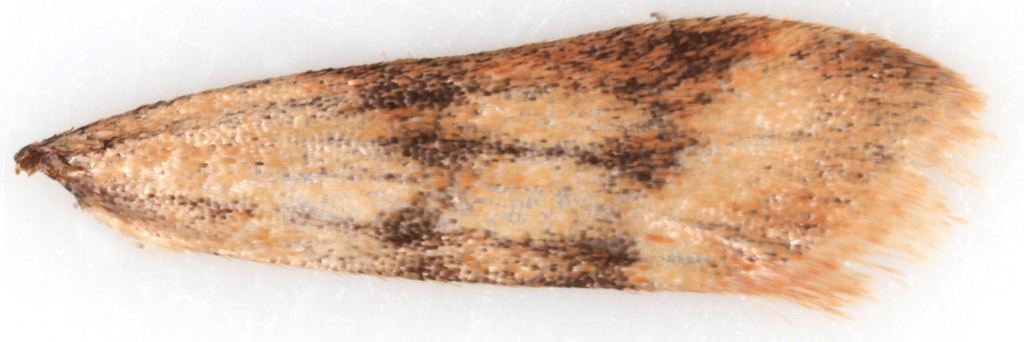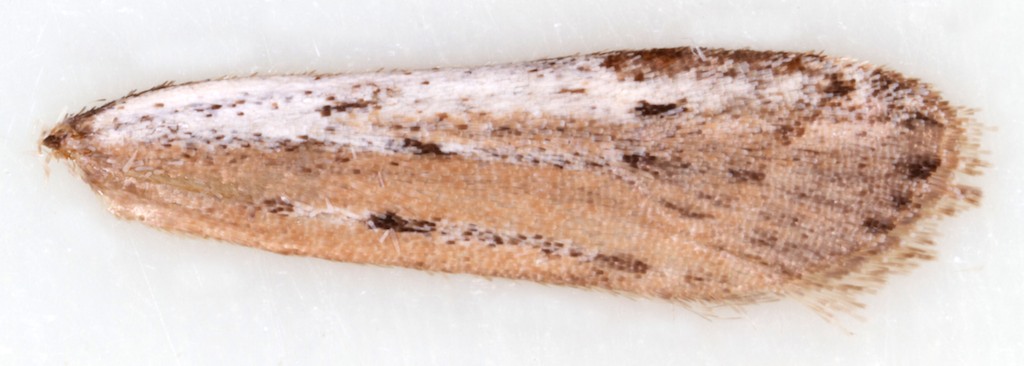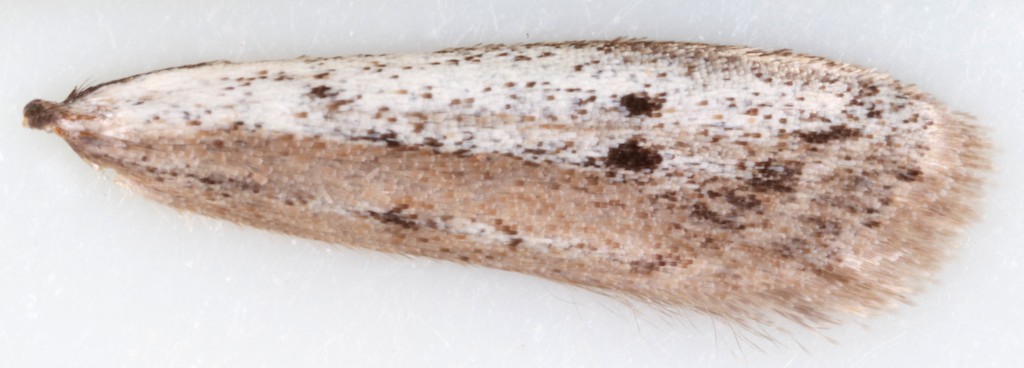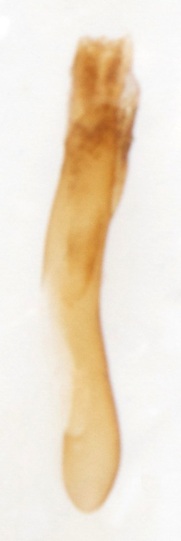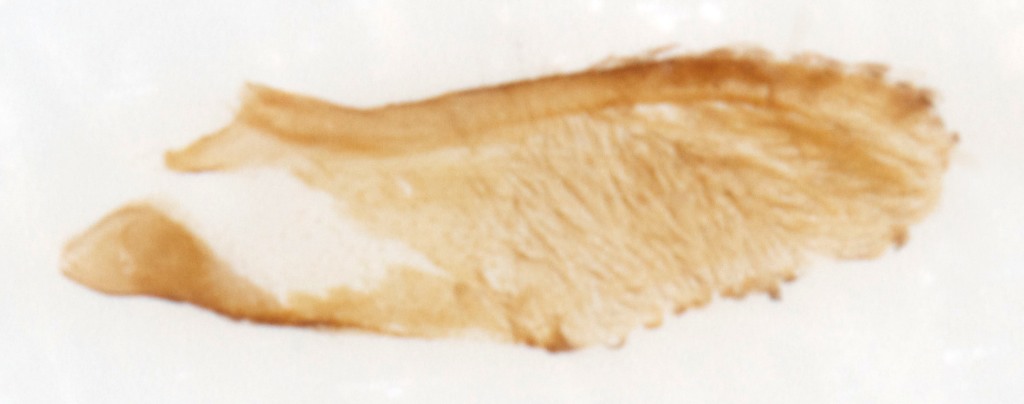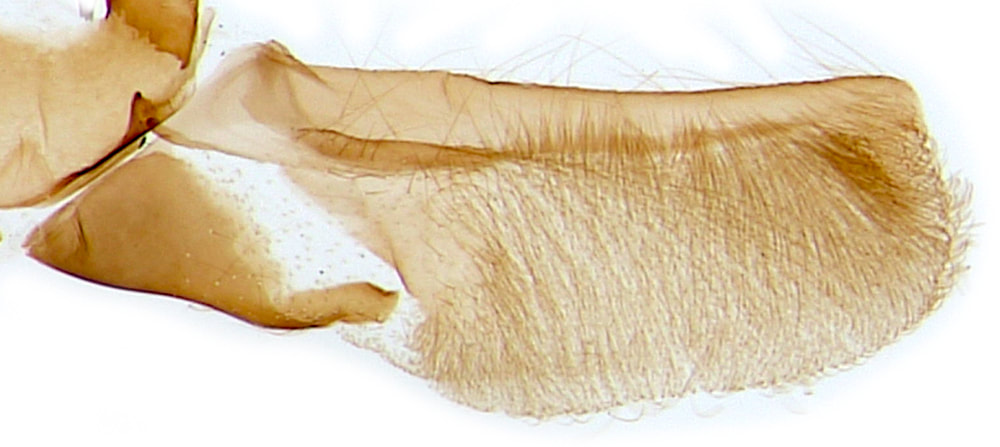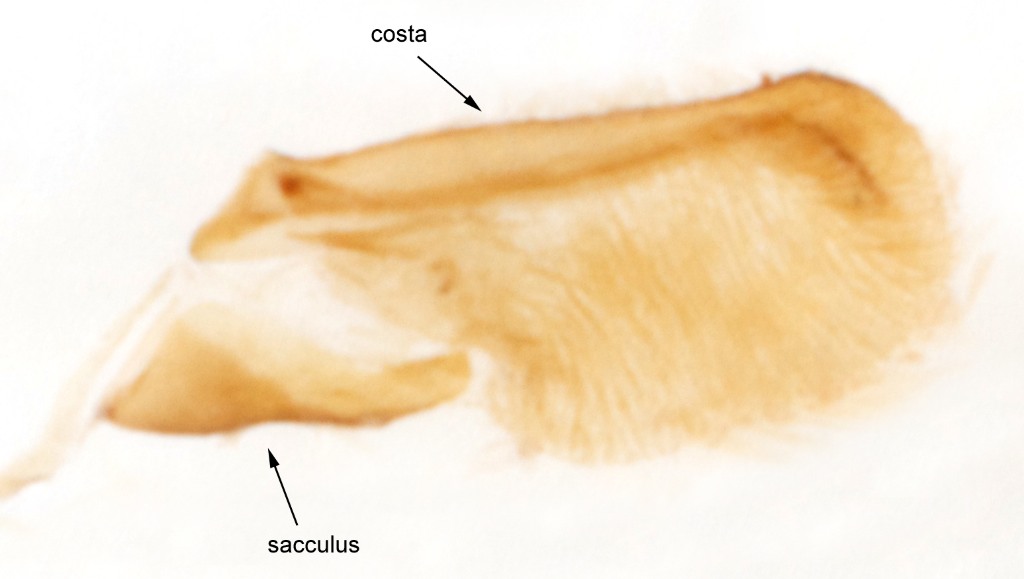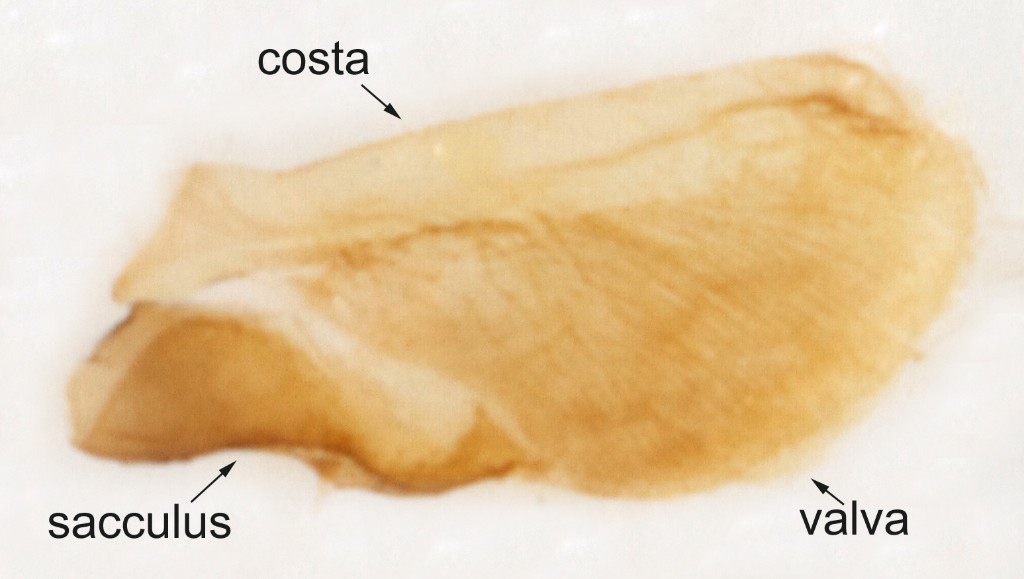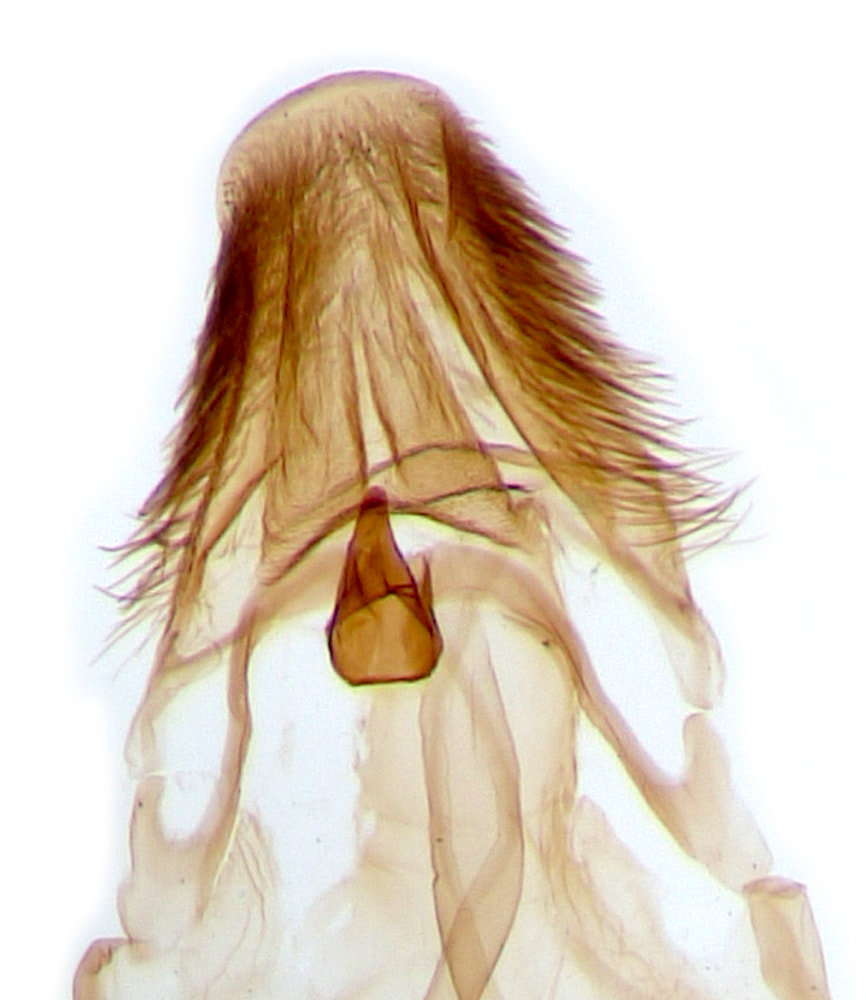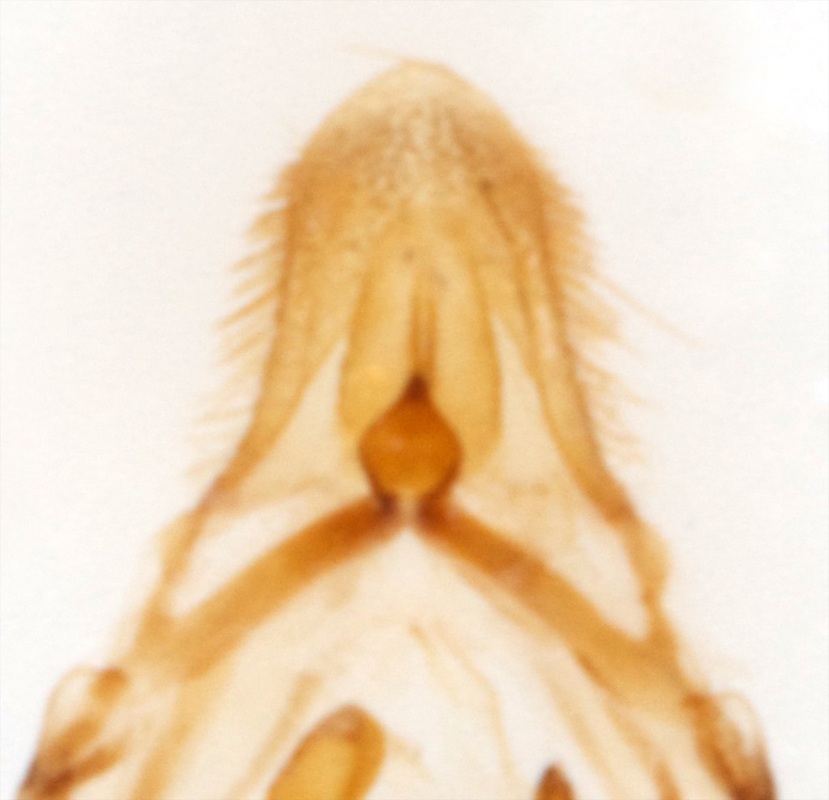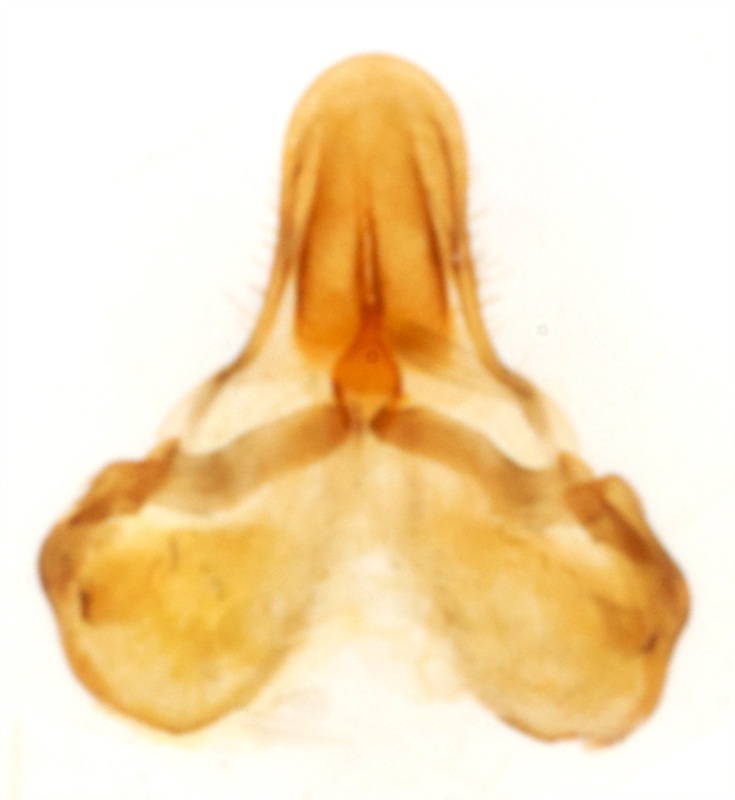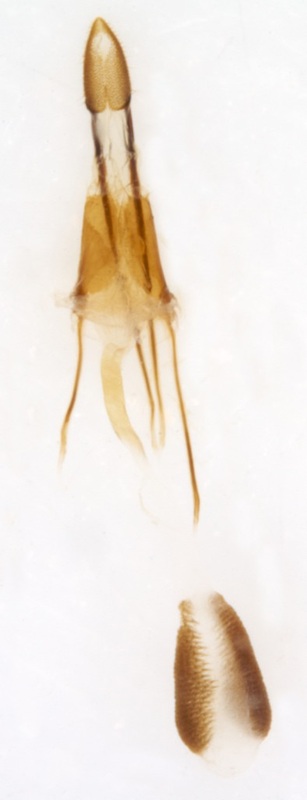PYRALIDAE | Phycitinae | Homoeosoma sinuella | Homoeosoma nebulella | Phycitodes binaevella | Phycitodes saxicola | Phycitodes maritima
Separation of Phycitodes species and Homoeosoma nebulella/nimbella
Phycitodes binaevella/saxicola/maritima and Homoeosoma nebulella/nimbella all show a similar forewing pattern of a chalky white costal half, light brown dorsal half, first line reduced to black dots, and a pair of black discal dots. H.sinuella is distinct and does not pose any ID problems.
SIZE & FOREWING MARKINGS
Wingspans from Goater, forewing lengths from Sterling & Parsons
P.binaevella (ws 22-27mm, fw 10-13mm) is larger than all other species in the group except H.nebulella. According to Goater, it can be identified with confidence from the strength and placement of the 3 dots forming the first line. The dorsal dot is the most elongate and the most distal; the middle and costal dots are transverse and often fused.
P.saxicola (ws14-20mm, fw 7-10mm), P.maritima (ws 18-22mm, fw 8-10mm) and H.nimbella (ws 16-21mm fw 8-11) are smaller, they all have weaker first line spots and the middle of these 3 dots (at the junction of brown and white colour) is placed more distally than in P.binaevella, such that the most dorsal spot is not the most distal. In P.saxicola/maritima the middle and dorsal spots are level with each other while in H.nimbella the middle dot may be the most distal. In all three species the first line dots may be weak and one or more of them may be obsolescent. These three species cannot be separated with confidence without recourse to genital dissection.
H.nebulella (ws 20-27mm fw 9-13mm) is similarly sized to P.binaevella but there is also overlap with the other group. It has a "characteristic" narrow dark shadow along the outer half of the costa; all the forewing spots are faint, and the spots representing the first line are very faint and at near to 1/2 (proximal to this in Phycitodes spp) and there is only a faint suggestion of terminal interneural dots.
Forewing venation: in P.saxicola V4 forks with V5 at a point closer to the cell than the wing margin; in P.maritima this fork occurs closer to the wing margin; in H.nimbella the fork is weak and occurs very close to the wing margin or V5 is absent.
Wingspans from Goater, forewing lengths from Sterling & Parsons
P.binaevella (ws 22-27mm, fw 10-13mm) is larger than all other species in the group except H.nebulella. According to Goater, it can be identified with confidence from the strength and placement of the 3 dots forming the first line. The dorsal dot is the most elongate and the most distal; the middle and costal dots are transverse and often fused.
P.saxicola (ws14-20mm, fw 7-10mm), P.maritima (ws 18-22mm, fw 8-10mm) and H.nimbella (ws 16-21mm fw 8-11) are smaller, they all have weaker first line spots and the middle of these 3 dots (at the junction of brown and white colour) is placed more distally than in P.binaevella, such that the most dorsal spot is not the most distal. In P.saxicola/maritima the middle and dorsal spots are level with each other while in H.nimbella the middle dot may be the most distal. In all three species the first line dots may be weak and one or more of them may be obsolescent. These three species cannot be separated with confidence without recourse to genital dissection.
H.nebulella (ws 20-27mm fw 9-13mm) is similarly sized to P.binaevella but there is also overlap with the other group. It has a "characteristic" narrow dark shadow along the outer half of the costa; all the forewing spots are faint, and the spots representing the first line are very faint and at near to 1/2 (proximal to this in Phycitodes spp) and there is only a faint suggestion of terminal interneural dots.
Forewing venation: in P.saxicola V4 forks with V5 at a point closer to the cell than the wing margin; in P.maritima this fork occurs closer to the wing margin; in H.nimbella the fork is weak and occurs very close to the wing margin or V5 is absent.

MALE GENITALIA
H.nimbella, P.saxicola & P.maritima are illustrated in Goater (p130) and in Sterling & Parsons (p393). All five species are shown at Dissection group.
The Homeosoma species have of a pair of processes which appear to arise as extensions from the the vinculum at its junction with the tegumen - these processes are absent in the Phycitodes species.
The juxta processes (=annelus arms) are noticeably longer and finer in the Homoesoma species than in the Phycitodes species.
The sacculus of Homeosoma species narrows markedly near its base so that from ~ 1/3 to its distal end it is narrow and straight; the sacculus of Phycitodes species has a more robust base and a more angular distal end.
In Homoesoma species abdominal S8 has a sclerotised posterior margin but no coremata; coremata are present in Phycitodes species.
H.nimbella, P.saxicola & P.maritima are illustrated in Goater (p130) and in Sterling & Parsons (p393). All five species are shown at Dissection group.
The Homeosoma species have of a pair of processes which appear to arise as extensions from the the vinculum at its junction with the tegumen - these processes are absent in the Phycitodes species.
The juxta processes (=annelus arms) are noticeably longer and finer in the Homoesoma species than in the Phycitodes species.
The sacculus of Homeosoma species narrows markedly near its base so that from ~ 1/3 to its distal end it is narrow and straight; the sacculus of Phycitodes species has a more robust base and a more angular distal end.
In Homoesoma species abdominal S8 has a sclerotised posterior margin but no coremata; coremata are present in Phycitodes species.
Aedeagus: The aedeagus of P.saxicola is noticeably thinner and more tapering than that of the other Phycitodes species
Valva: P.maritima shows a pronounced angulation of the distal end of the sacculus
Uncus: P.maritima has a smooth uncus without noticeable bristles. In P.saxicola the uncus is bristly and in P.binaevella very bristly.
FEMALE GENITALIA
H.nimbela/nebulella both have a relatively small single oval patch of spines near the anterior end (away from the junction with the ductus) of the corpus bursae. I cannot see that these two can be distinguished from their female genitalia.
The Phycitodes species have paired spiculate patches at or near the junction between the ductus bursae (DB) and the corpus bursae (CB).
In P.maritima these patches are oval and distinctly bulging*. In P.saxicola they are elongate (much longer than half length of CB) and equal-sized. In P.binaevella they are short (less than half length of CB) fairly equal-sized, somewhat rounded and less bulging than in P.maritima.
In P.maritima and P.binaevella the DB has an asymmetric bulb, absent in P.saxicola.
* In Goater's drawing of P.maritima - the spiculate patches appear much more unequally sized than in the images here and at Moth Dissection; and the asymmetric bulb is drawn at ~ halfway between ostium and CB, whereas in both images it is clearly in the anterior half of the DB (closer to the CB); Goater also draws a finely spiculate section of DB between the bulb and the CB which is not seen in either of the images.
H.nimbela/nebulella both have a relatively small single oval patch of spines near the anterior end (away from the junction with the ductus) of the corpus bursae. I cannot see that these two can be distinguished from their female genitalia.
The Phycitodes species have paired spiculate patches at or near the junction between the ductus bursae (DB) and the corpus bursae (CB).
In P.maritima these patches are oval and distinctly bulging*. In P.saxicola they are elongate (much longer than half length of CB) and equal-sized. In P.binaevella they are short (less than half length of CB) fairly equal-sized, somewhat rounded and less bulging than in P.maritima.
In P.maritima and P.binaevella the DB has an asymmetric bulb, absent in P.saxicola.
* In Goater's drawing of P.maritima - the spiculate patches appear much more unequally sized than in the images here and at Moth Dissection; and the asymmetric bulb is drawn at ~ halfway between ostium and CB, whereas in both images it is clearly in the anterior half of the DB (closer to the CB); Goater also draws a finely spiculate section of DB between the bulb and the CB which is not seen in either of the images.
Page published 24/06/2013 | Text amended 21/07/2014 | P.maritima female genitalia added and text amended 19/08/2014 | P.binaevella female genitalia added and text amended 07/12/2016
